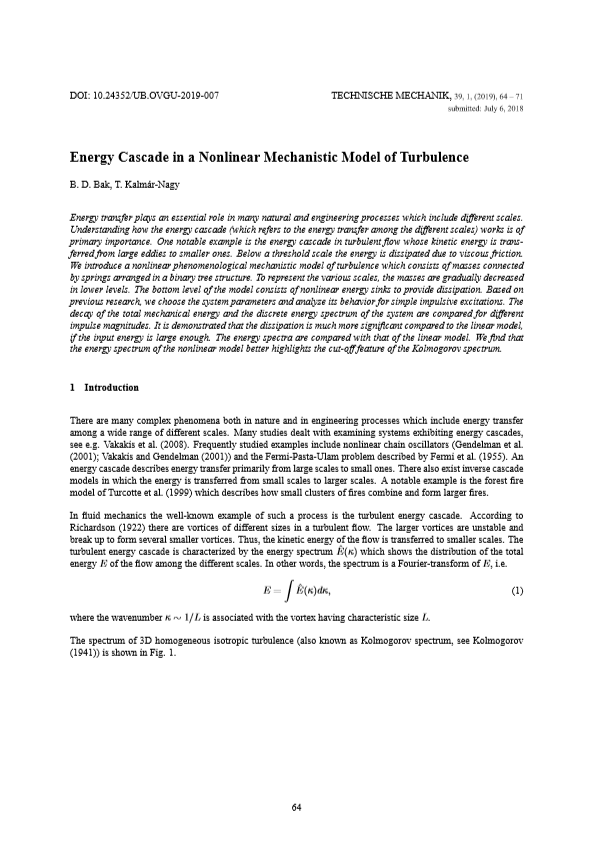Energy Cascade in a Nonlinear Mechanistic Model of Turbulence
DOI:
https://doi.org/10.24352/UB.OVGU-2019-007Abstract
Energy transfer plays an essential role in many natural and engineering processes which include different scales. Understanding how the energy cascade (which refers to the energy transfer among the different scales) works is of primary importance. One notable example is the energy cascade in turbulent flow whose kinetic energy is transferred from large eddies to smaller ones. Below a threshold scale the energy is dissipated due to viscous friction. We introduce a nonlinear phenomenological mechanistic model of turbulence which consists of masses connected by springs arranged in a binary tree structure. To represent the various scales, the masses are gradually decreased in lower levels. The bottom level of the model consists of nonlinear energy sinks to provide dissipation. Based on previous research, we choose the system parameters and analyze its behavior for simple impulsive excitations. The decay of the total mechanical energy and the discrete energy spectrum of the system are compared for different impulse magnitudes. It is demonstrated that the dissipation is much more significant compared to the linear model, if the input energy is large enough. The energy spectra are compared with that of the linear model. We find that the energy spectrum of the nonlinear model better highlights the cut-off feature of the Kolmogorov spectrum.





